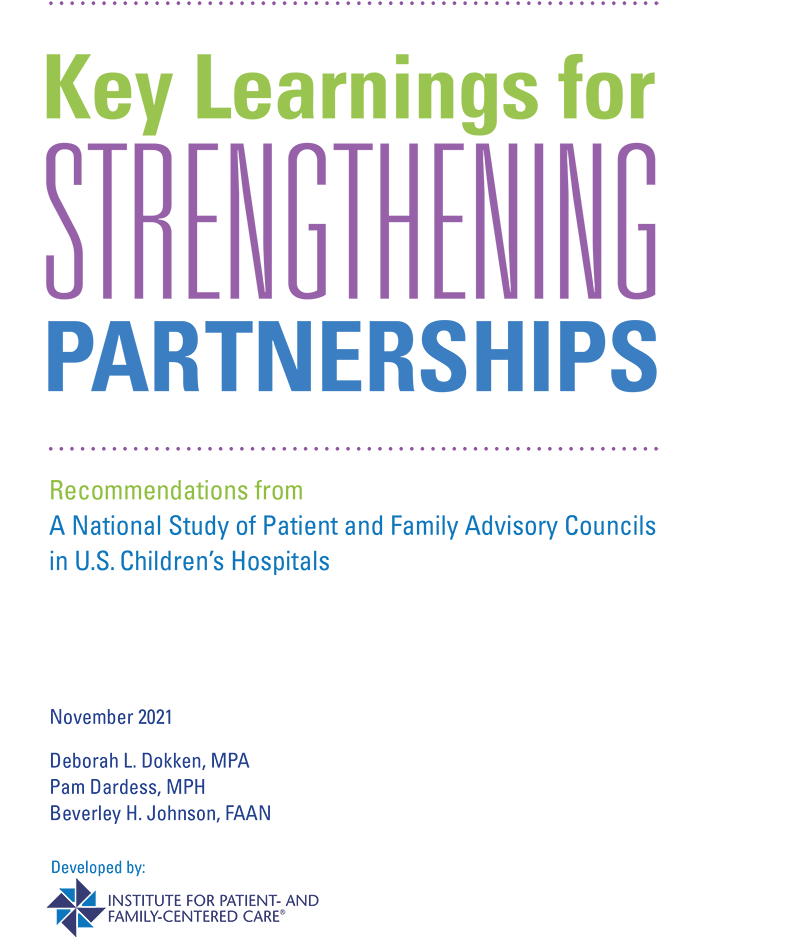For more than three decades, PFACs have existed as an important mechanism for engaging families and patients as partners in change and improvement in children’s hospitals. However, there were no known studies assessing the prevalence of PFACs, their operational characteristics, performance, and influence.
To address this gap, IPFCC, in collaboration with Cincinnati Children’s Hospital Medical Center, conducted a research study of children’s hospital PFACs in the United States. The study consisted of both an online survey and virtual interviews. In addition to data about prevalence, characteristics, performance, and influence of PFACs, the study was also able to explore emerging issues such as PFAC diversity and PFAC operations during COVID-19. Support for the study was provided by the Lucile Packard Foundation for Children’s Health, Palo Alto, California.

IPFCC’s free online guidance resource, Key Learnings for Strengthening Partnerships: Recommendations from a National Study of Patient and Family Advisory Councils in U.S. Children’s Hospitals, highlights ten key learnings from the study, ranging from the role of leadership to the use of technology. This resource provides practical guidance to the field about strengthening partnerships with families and patients. It is intended for hospitals that are developing PFACs and also for those with well-established councils. The resource and study results were presented on a IPFCC webinar on December 14th. Watch the recording here.
Key Learnings
- Leadership commitment to and support of partnerships is important for the success of PFACs.
- Successful PFACs develop and expand progressively over time and focus ongoing attention on relationship- and trustbuilding among PFAs, staff, and the community.
- A defined infrastructure, including staff coordination and an allocated budget, facilitates and sustains PFAC development.
- Organizations need a specific recruitment strategy to sustain and expand patient and family membership on PFACs and to ensure that populations served are represented.
- Expanding involvement of PFAs beyond PFAC membership (e.g., organizational workgroups and committees) reflects growth and organizational commitment to patient and family engagement.
- Patient and family advisors need planned opportunities for onboarding, mentoring, and continuing education as well as specific training for roles on workgroups and committees.
- As the number of PFACs grows within an organization, it is helpful to design a mechanism to ensure coordination and synergy of efforts.
- Successful PFACs adapt to emerging issues (e.g., the COVID-19 pandemic) and are integrally involved in organizational decision-making about them.
- Measurement, evaluation, and reporting of PFAC impact on key initiatives highlights the PFAC’s importance within the organization and provides the rationale for expanded engagement of patients and families.
- Effective use of technology has the potential to increase PFAC membership, diversity, and effectiveness.

